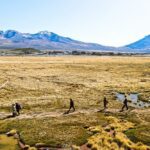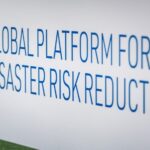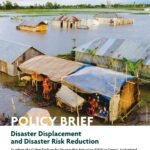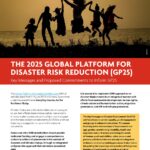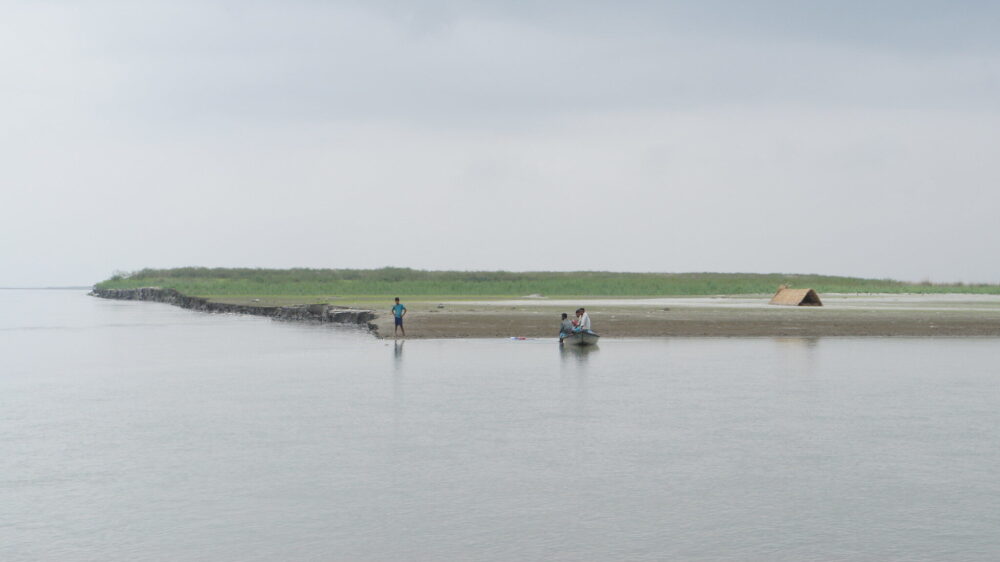Reporting back – Data and Financing for Disaster Displacement as Loss and Damage – A Stakeholder Engagement Mechanism Working Session at GP25
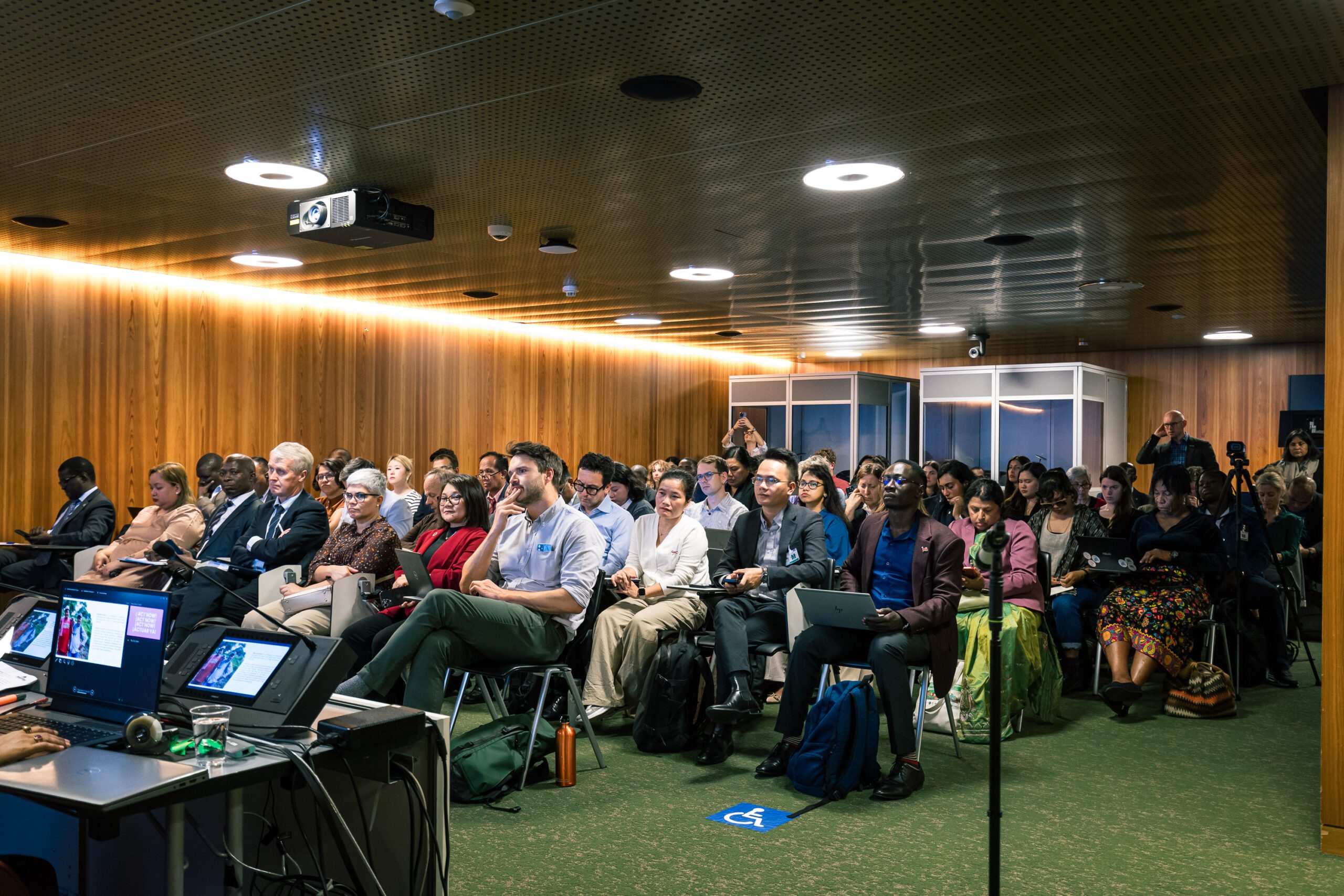
Geneva, Switzerland, 2 June 2025: At the occasion of the Global Platform on Disaster Risk Reduction 2025 (GP2025), the Platform on Disaster Displacement (PDD), the Internal Displacement Monitoring Centre (IDMC), ActionAid International and the Global Network of Civil Society Organizations for Disaster Reduction (GNDR) organized a Stakeholder Engagement Mechanism (SEM) Working Session titled Data and Financing for Disaster Displacement as Loss and Damage.
This session was organized as part of the Preparatory Days at GP2025 which took place from 2-3 June 2025 and provided stakeholders and partners a platform to network and exchange knowledge.
This session was moderated by Mr. Steven Goldfinch, Senior Disaster Risk Management Specialist, Asian Development Bank (ADB). The opening remarks were given by Ms. Noralene Uy, Assistant Secretary General, Department of Environment and Natural Resources, Government of the Philippines. The panel featured Ms. Hoang Phuong Thao, Executive Director, ActionAid Vietnam, Ms. Catalina Díaz Escobar, Corporación Antioquia Presente (Colombia), Ms. Christelle Cazabat, Head of Programmes, IDMC and Mr. Isoa Talemaibua, Permanent Secretary, Fiji’s Ministry for Maritime and Rural Development. The closing remarks were given by H. E. Mr. James Ndirangu Waweru, Deputy Permanent Representative at the Permanent Mission of the Republic of Kenya to the United Nations in Geneva.
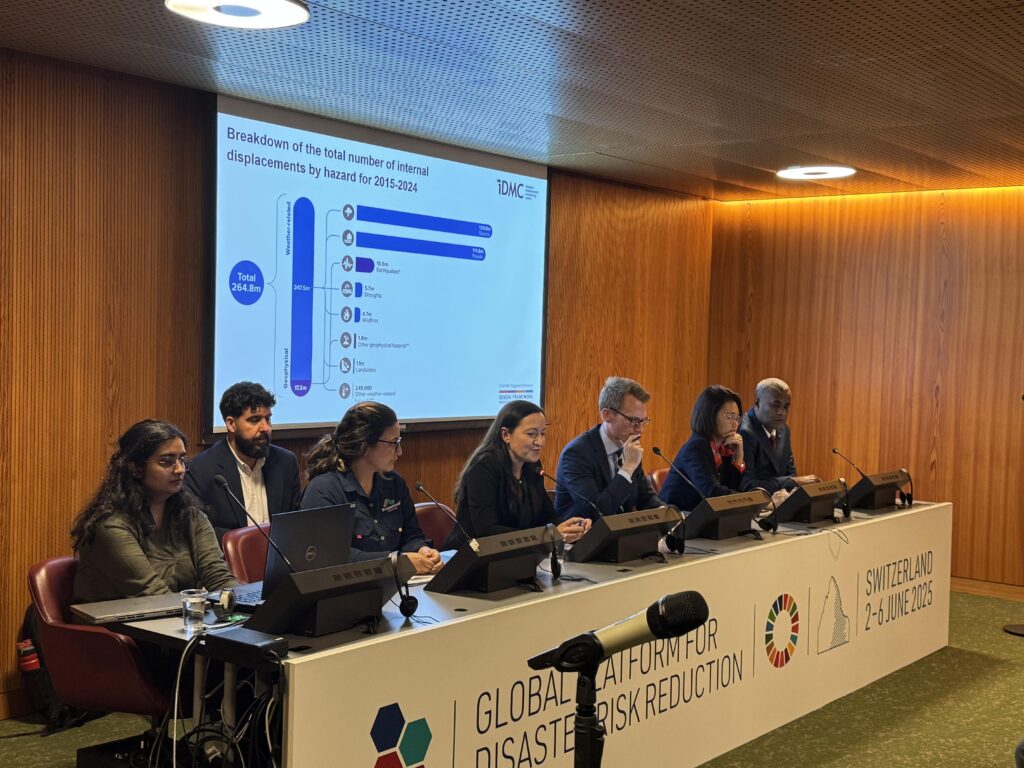
In her opening remarks, Ms. Noralene Uy highlighted that the Philippines are one of the countries at highest risk of disaster displacement and the impact of climate change, evident from recurring and frequent tropical cyclones and floods. She highlighted the efforts made by the Philippines government which also hosted the Asia-Pacific Ministerial Conference for Disaster Risk Reduction (APMCDRR) in Manila, Philippines from 14-18 October 2024. The Philippines has been proactive at developing and implementing development and resilience measures for preventing displacement including integrating displacement and climate mobility in National Adaptation Plans (NAPs), DRR strategies and also hosting the Fund for Responding to Loss and Damage (FRLD). She urged governments and other stakeholders to collect disaggregated disaster displacement data, anticipate hotspots for disaster displacement and climate mobility, and build financing mechanisms that systematically adapt and channel investments for long-term and durable solutions.
The lack of disaster risk reduction affects the welfare of individuals, disrupts the economy and may reverse gains from development measures, resulting in compounding of loss and damage.” – Ms. Noralene Uy
IDMC’s Head of Programmes, Ms. Christelle Cazabat, presented data from IDMC’s two latest reports: the 2025 Global Report on Internal Displacement and a new report launched at GP25 called Countdown to 2030: Achieving global targets on disaster displacement. IDMC’s most recent data indicates that among all natural hazards, storms were the main drivers of disaster displacement, closely followed by floods.
In 2024, IDMC recorded 45.8 million disaster displacements, which is the highest ever recorded. Those who are most vulnerable to disaster displacements are affected more often and more severely.” – Ms. Christelle Cazabat
Ms. Cazabat commended the Philippines for its effort at gathering disaster displacement data. She highlighted that evacuated people sometimes end up in protracted displacement. She stressed the need for access to financing which is crucial for reducing disaster displacement and its negative consequences.
Ms. Catalina Diaz Escobar from Corporación Antioquia Presente, Colombia spoke to the importance of addressing disaster displacement in a differentiated manner from how conflict-induced displacement is usually addressed. She stressed the importance of early warning systems and real-time monitoring of disasters which help in saving lives, and the need to collect disaggregated data that improve decisions for averting, minimizing and addressing disaster displacement. She insisted that data is necessary to develop inclusive policies and maximize development gains by ensuring intersectionality in government policies. She also emphasized that data should be ‘democratized’ which means granting access to opportunities for everyone.
Ms. Hoang Phuong Thao from ActionAid, Vietnam highlighted the strong relationship between data and responsiveness. She presented the three As: availability, affordability, and accountability, which should be considered when approaching the collection and use of disaster displacement data. She stressed the importance of including gender responsiveness and consideration of marginalized groups in the collection of data. She gave an example from Vietnam where every household is contributing $6 to the National Fund for Disaster Management which helps the government with ensuring prevention measures and post-disaster recovery. She recognizes the value of the private sector for investing in disaster recovery. Action Aid supports communities with data collection, training and support.
Permanent Secretary Mr. Isoa Taelmaibua from Fiji highlighted that more efforts and resources need to be dedicated to DRR, with an urgent need to scale up current measures.
Fiji is experiencing recurring and intensifying hazards, compounded by widespread exposure and limited coping capacity.” – Mr. Isoa Taelmaibua
He emphasized the importance of addressing the root causes of disaster risk and shifting focus from reactive responses to proactive strategies that reduce vulnerability and enhance resilience.
Mr. Taelmaibua shared that Fiji has begun community risk profiling to better understand the contributing factors to disaster risk at the local level and incorporate them into national development planning. To sustain and scale these efforts, Fiji is exploring a range of financing mechanisms and innovative climate solutions. Acknowledging the existing financing gap for DRR, Fiji is also drawing lessons from climate financing and private sector involvement in other regions.
The event concluded with a Question-and-Answer session that highlighted key gaps and opportunities across countries, such as challenges in ensuring disaster preparedness and evacuation for persons with disabilities; the need for more inclusive infrastructure and financing. IDMC emphasized the importance of disaggregated and long-term data to better understand displacement impacts and support targeted solutions. Examples from Fiji illustrated how layered financing tools such as concessional loans, catastrophe bonds, and parametric insurance can work together to strengthen disaster response. Panelists also stressed the need for affordable, accessible data and innovative funding mechanisms.
H.E. Mr. James Ndirangu Waweru from the Permanent Mission of Kenya to the UN, serving as the current Chair of the Platform on Disaster Displacement, in his closing remarks, referenced the worst drought in Kenya in 40 years followed by the worst floods the country has ever experienced. With the impact of climate change manifesting through rising sea levels, more frequent and intense disasters, disaster displacement is projected to increase, while displaced persons often get stuck in protracted displacement. He reiterated the importance of collecting disaggregated, accessible and intersectional disaster displacement data and highlighted the work of the PDD as a crucial effort towards the better protection for people at risk of or being displaced in the context of disasters and climate change.
Photo credits: Antoine Tardy for UNDRR


